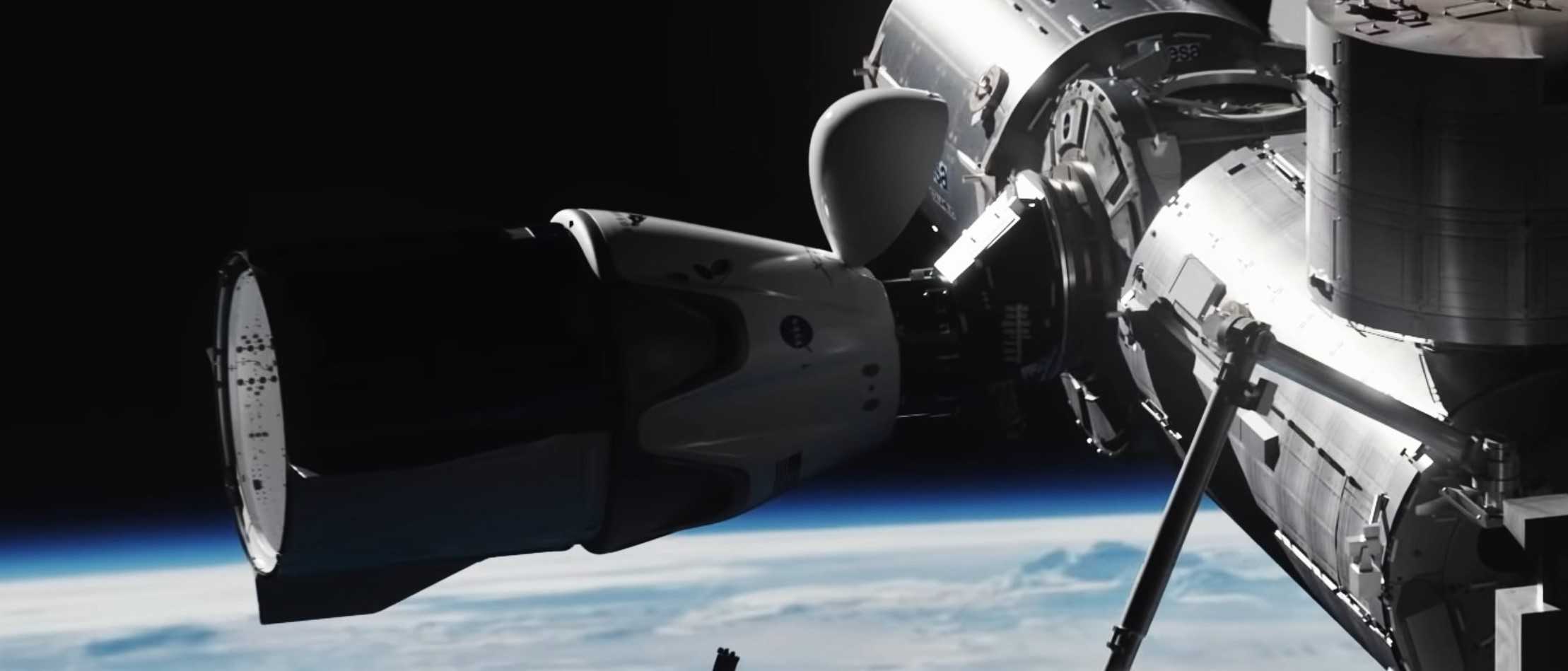

News
SpaceX's Crew Dragon astronaut launch debut schedule revealed by Elon Musk
On the heels of a brand new animation simulating the spacecraft’s next orbital launch milestone, SpaceX CEO Elon Musk has revealed a tentative schedule for Crew Dragon’s astronaut launch debut.
Known as Demo-2, short for Crew Dragon’s second orbital demonstration mission, the launch could make SpaceX the first commercial company in history to send astronauts to space (i.e. orbit), as well as the first private company to deliver astronauts to the International Space Station (ISS). If things go as planned over the next several months, that should kick off a new era where NASA will routinely rely on SpaceX (and Boeing) to ensure that the US has a continued presence in space.
The International Space Station has been continuously crewed by astronauts since October 31st, 2000, representing nearly two decades that humanity has had an uninterrupted presence in space. Supported by regular NASA Space Shuttle and Russian Soyuz launches that enabled space agencies to safely send astronauts to and from the space station, SpaceX’s Crew Dragon and Boeing’s Starliner are nearly ready to pick up the torch that NASA and the United States fumbled when the Shuttle was prematurely canceled in 2011.
Over the last five years, SpaceX has been working tirelessly to design, build, and test Crew Dragon – all in the name of ensuring that it will be one of the most reliable and capable human-rated spacecraft ever flown once it begins taking astronauts to and from the ISS. As with almost all human-rated spacecraft in history, Crew Dragon’s development has not been without its hurdles and detours, ranging from challenges with the spacecraft’s parachute recovery systems to a catastrophic capsule explosion during thruster testing.
As a result, SpaceX has put extra effort into optimizing and redesigning Crew Dragon’s many subsystems to ensure that all work exactly as intended. Thankfully, all of Crew Dragon’s development hurdles have occurred during testing specifically designed to reveal such problems, meaning that no humans have been harmed (or killed) over the course of the program. In the history of human spaceflight, it has often been the case that catastrophic spacecraft failure modes are only discovered after operational flights began, resulting in the deaths of numerous astronauts during Soyuz, Space Shuttle, and SpaceShipTwo – as well as three NASA astronauts during Apollo 1 ground testing.
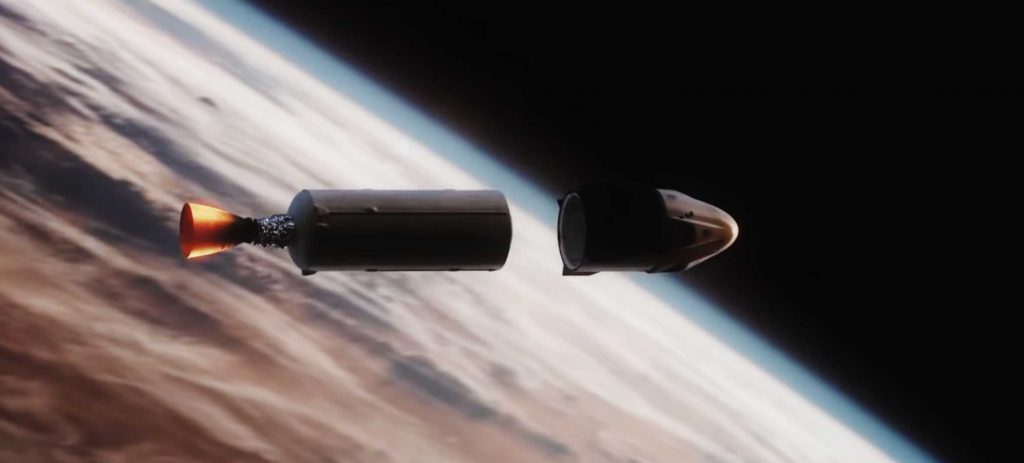
Spaceflight is nevertheless a dangerous endeavor, at least for the time being, so it’s entirely possible that Crew Dragon will ultimately suffer accidents or failures during crewed missions, evidenced most recently by Starliner’s failure to reach the space station during the Boeing’s spacecraft’s first orbital launch. Still, both companies are working hard to ensure that even in the event of a failure, their spacecraft are able to protect their astronaut passengers and safely return them to Earth.
In line with that, SpaceX (unlike Boeing) opted to perform a live In-Flight Abort (IFA) test with Crew Dragon before allowing the spacecraft to begin astronaut launches. Scheduled to launch as early as January 11th, SpaceX will launch a Dragon spacecraft atop Falcon 9 and simulate a rocket failure during the most stressful point of launch. If Crew Dragon can fire up its abort thrusters and whisk its hypothetical passengers to safety, chances are that the spacecraft will be able to do the same at any other point during launch – from before liftoff all the way to orbit.
SpaceX has been developing its first human-rated spacecraft since it began build Cargo Dragon more than a decade ago – all paths for the company have ultimately pointed towards human spaceflight. According to CEO Elon Musk, the Crew Dragon spacecraft and Falcon 9 launch vehicle assigned to support the company’s inaugural astronaut launch will be in Florida and ready for flight as early as February 2020, a few-month delay compared to the often overly-optimistic executive’s previous Nov/Dec 2019 target.
Although the hardware could be ready to launch three months (or less) from now, Musk believes that the NASA preflight reviews that must follow will likely take “a few more months” – unfortunately likely given that Crew Dragon’s uncrewed launch debut (Demo-1) was likely ready for flight almost two months before NASA finally cleared SpaceX to launch.
Ultimately, as long as Crew Dragon’s IFA test goes well next month, it’s likely that the spacecraft will launch twice in the first half of 2020, potentially making history sometime in the second quarter.
Check out Teslarati’s Marketplace! We offer Tesla accessories, including for the Tesla Cybertruck and Tesla Model 3.
Elon Musk
Elon Musk confirms Grok 4 launch on July 9 with livestream event
The rollout will be accompanied by a livestream at 8 p.m. Pacific Time.
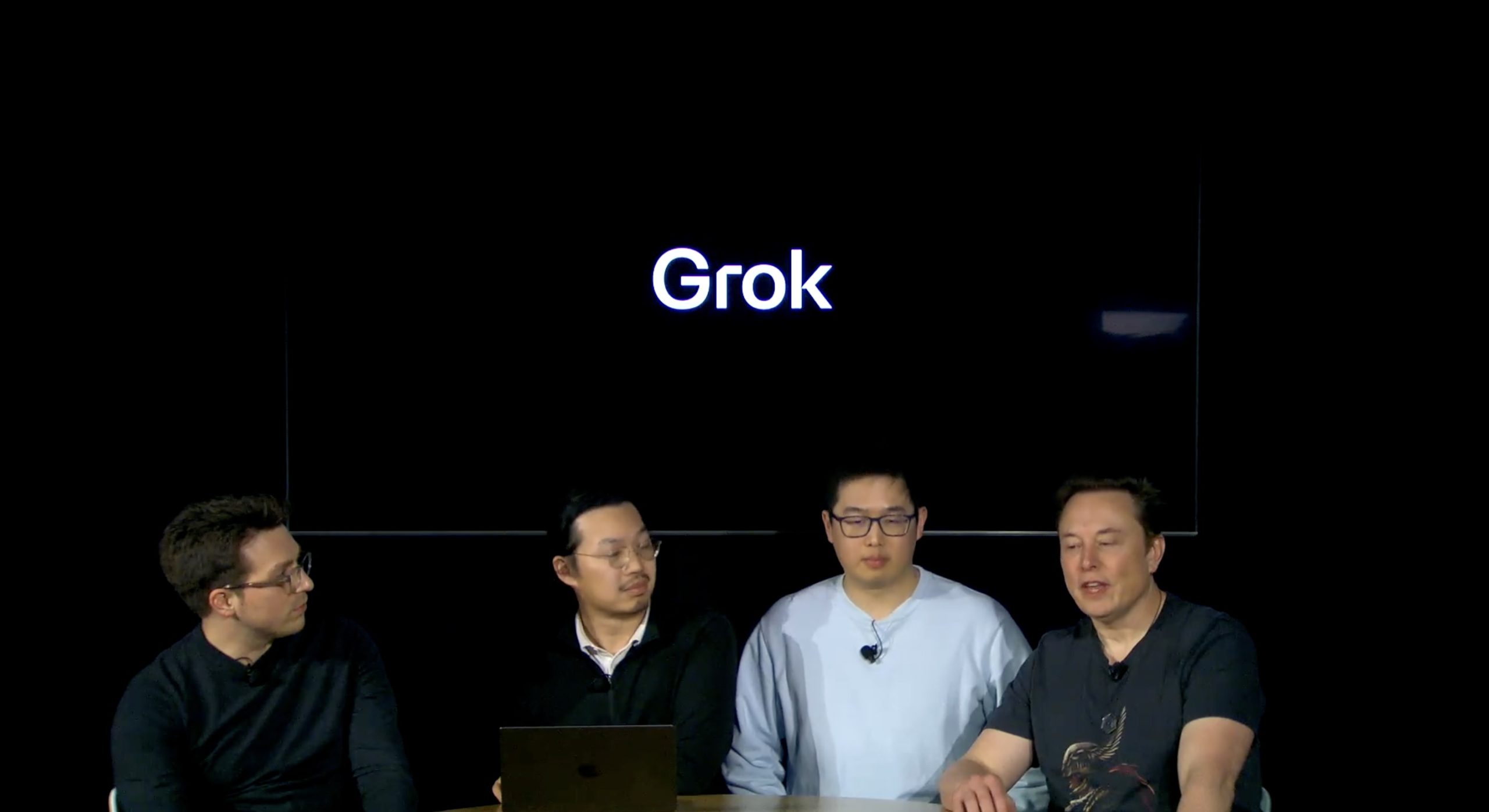
Elon Musk has officially confirmed that Grok 4, the latest version of xAI’s large language model, will launch on July 9. The rollout will be accompanied by a livestream at 8 p.m. Pacific Time, hosted on xAI’s official account on X.
xAI goes straight to Grok 4
Back in May, leaks indicated that xAI was getting ready to ship Grok 3.5. Considering Musk’s recent comments, however, it appears that the artificial intelligence startup would be focusing on the large language model’s fourth iteration instead. As noted in a Financial Express report, users on X have sighted references to Grok 4 in the lead up to the update’s launch, such as “grok-4-prod-mimic” and “Grok 4 Code.”
Musk’s Grok 4 announcement comes as AI competition intensifies between major players including OpenAI, Google, and xAI. With Musk’s Colossus supercomputer fully operational in Memphis, xAI appears to be accelerating its AI product roadmap.
Musk pushes Grok toward political neutrality
Grok 4’s launch also follows a recent controversy involving political bias, as noted in a CNN report. Last week, Grok responded to a user on X stating that political violence in the U.S. since 2016 had come more from the political right than the left. The chatbot noted in a later reply that its answer was based on information from sources like Reuters, the Journal of Democracy, and University of Maryland studies.
Musk stated that Grok’s response was a “major fail.” “Major fail, as this is objectively false. Grok is parroting legacy media. Working on it,” he wrote in a post on X. By the end of June, Musk noted that he was “grinding all night with the xAI team” and that they were making “good progress.” He also stated that the model “Will be called Grok 4. Release just after July 4th. Needs one more big run for a specialized coding model.”
News
Tesla opens massive solar Supercharger station in California
The Supercharger opened to customers ahead of Fourth of July weekend, while Tesla continues phase two of construction on the site.
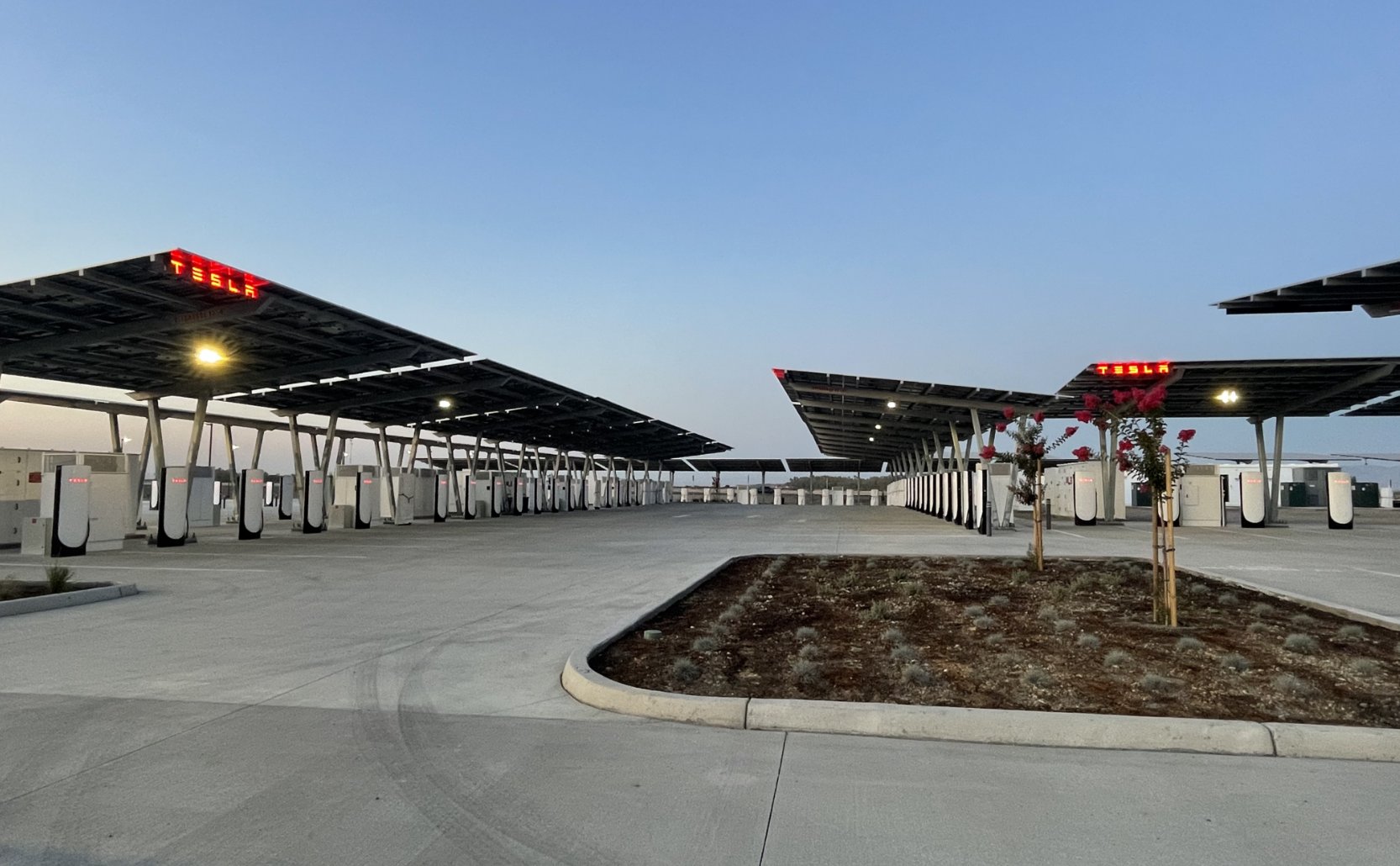
Tesla has officially launched the first several Supercharging posts at a massive station in California, notably including solar canopies and grid-scale batteries to offer completely renewable charging.
Last week, Tesla announced on X that it opened the first 84 Supercharger stalls of a planned 168-stall station in Lost Hills, California. Additionally, the massive Supercharger project features 11MW of solar canopies and 10 Megapack batteries for off-grid charging powered entirely by solar energy.
Tesla completed the first phase of the project just days ahead of the busy Fourth of July holiday weekend, adding that initial construction took just eight months. In addition to the remaining charging stalls, Tesla says it’s building a set of lounge areas, renderings of which can be seen below alongside current photos of the site.
Notably, the site also includes V4 charging posts for the company’s latest available charging speeds, and it’s located near the busy junction between I-5 and Highway 46 in Kern County.
“Thank you [Kern County] and [PG&E] for collaboration and approvals,” Tesla wrote in a follow-up post.
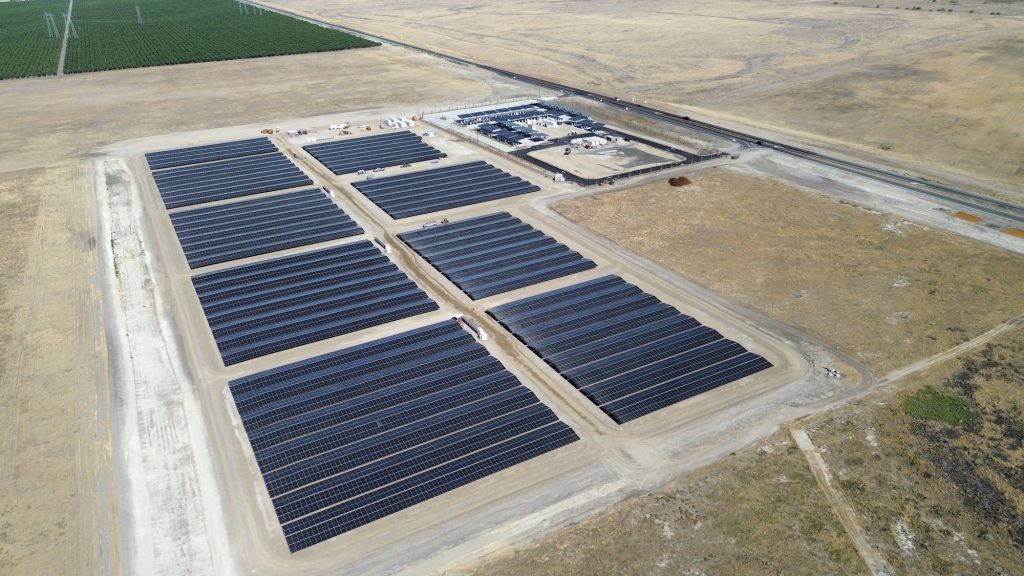
Credit: Tesla Charging | X
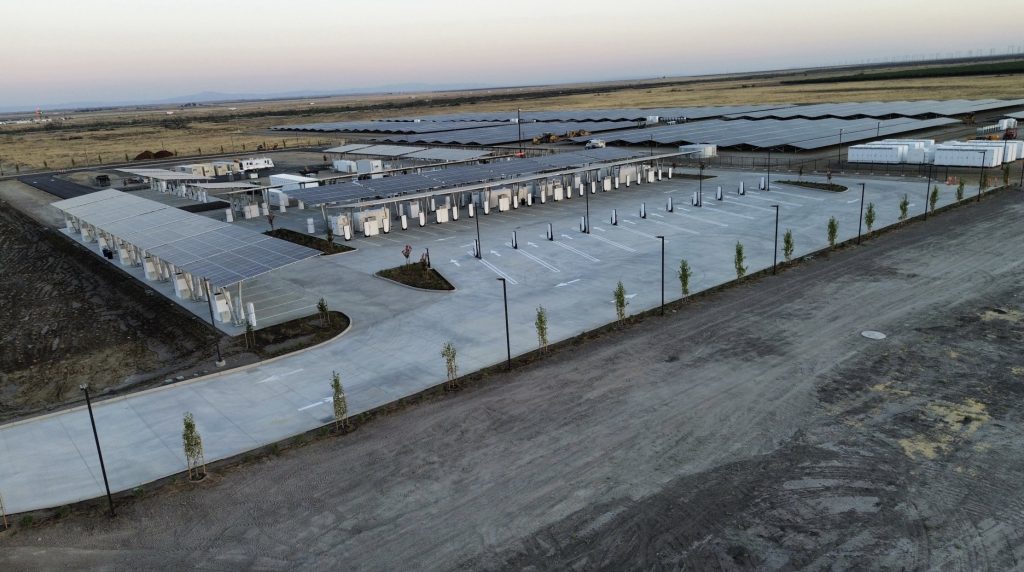
Credit: Tesla Charging | X
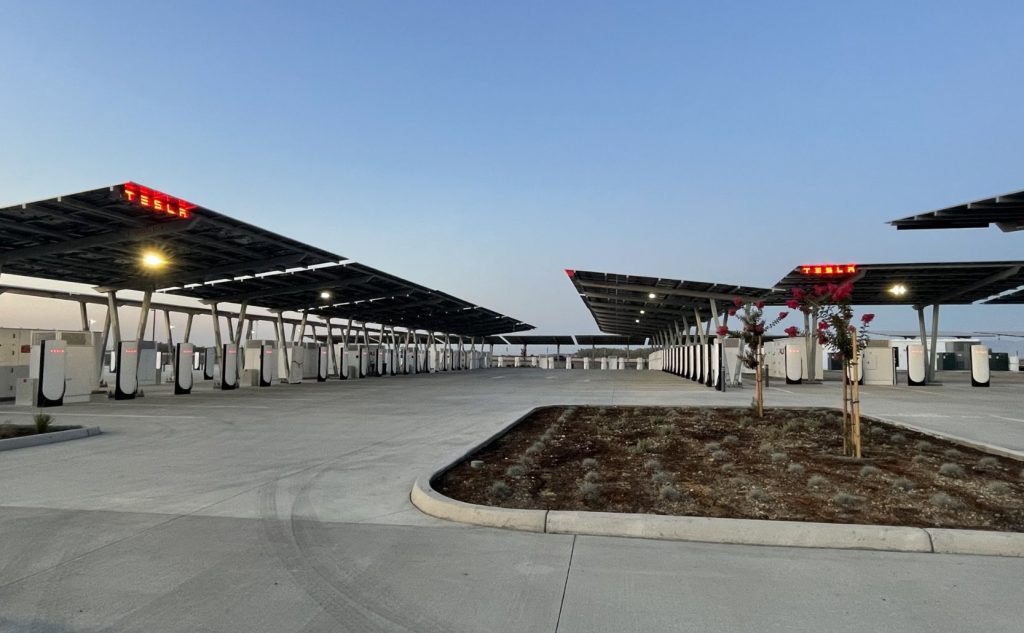
Credit: Tesla Charging | X
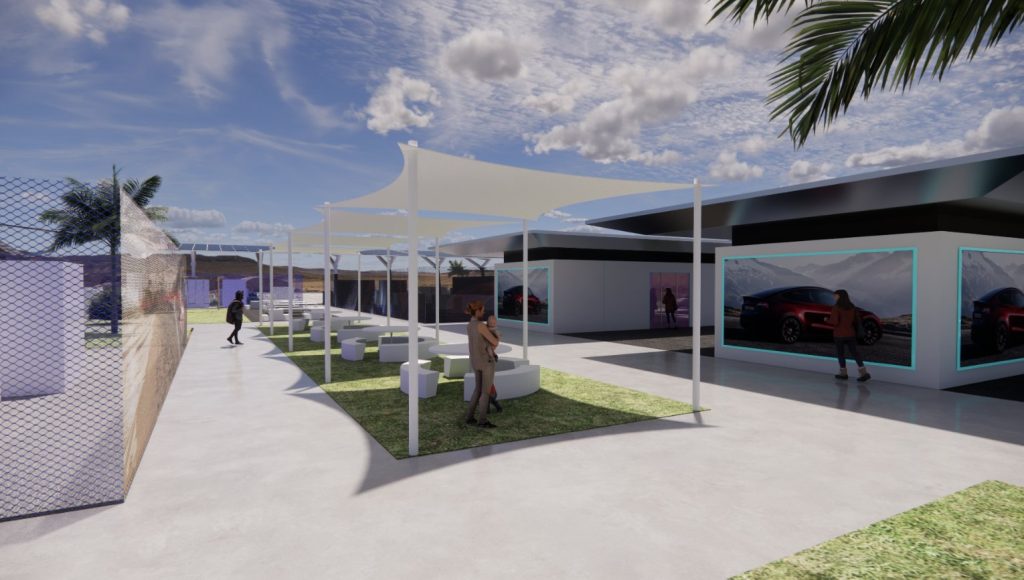
Credit: Tesla Charging | X
Tesla Supercharger Maps for North America, Europe, and Asia pic.twitter.com/0U5r0XRPyo
— TESLARATI (@Teslarati) July 2, 2025
READ MORE ON TESLA SUPERCHARGERS: Tesla launches ultra-fast V4 Superchargers in China for the first time
Testing at the LA Diner, plus Musk update on potential Tesla solar Gigafactory
The huge Tesla Supercharger station completed phase one of construction fairly quickly, especially given how long Tesla has been working on its unique Los Angeles diner, drive-in, and Supercharger location. Still, the company was seen performing some testing at the nearly-completed charging station earlier this month, and will reportedly be holding a job fair.
Elon Musk also responded on Monday morning to a post on X, suggesting that Tesla is “thinking about” building a U.S.-based solar Gigafactory in order to help support increased power needs with AI growth, and to bolster domestic solar production.
Tesla is building a new UFO-inspired Supercharger in the heart of Alien country
News
Tesla driver walks away from major accident with minor injuries
The driver sustained only minor injuries, and the exact cause of the crash remains under investigation.
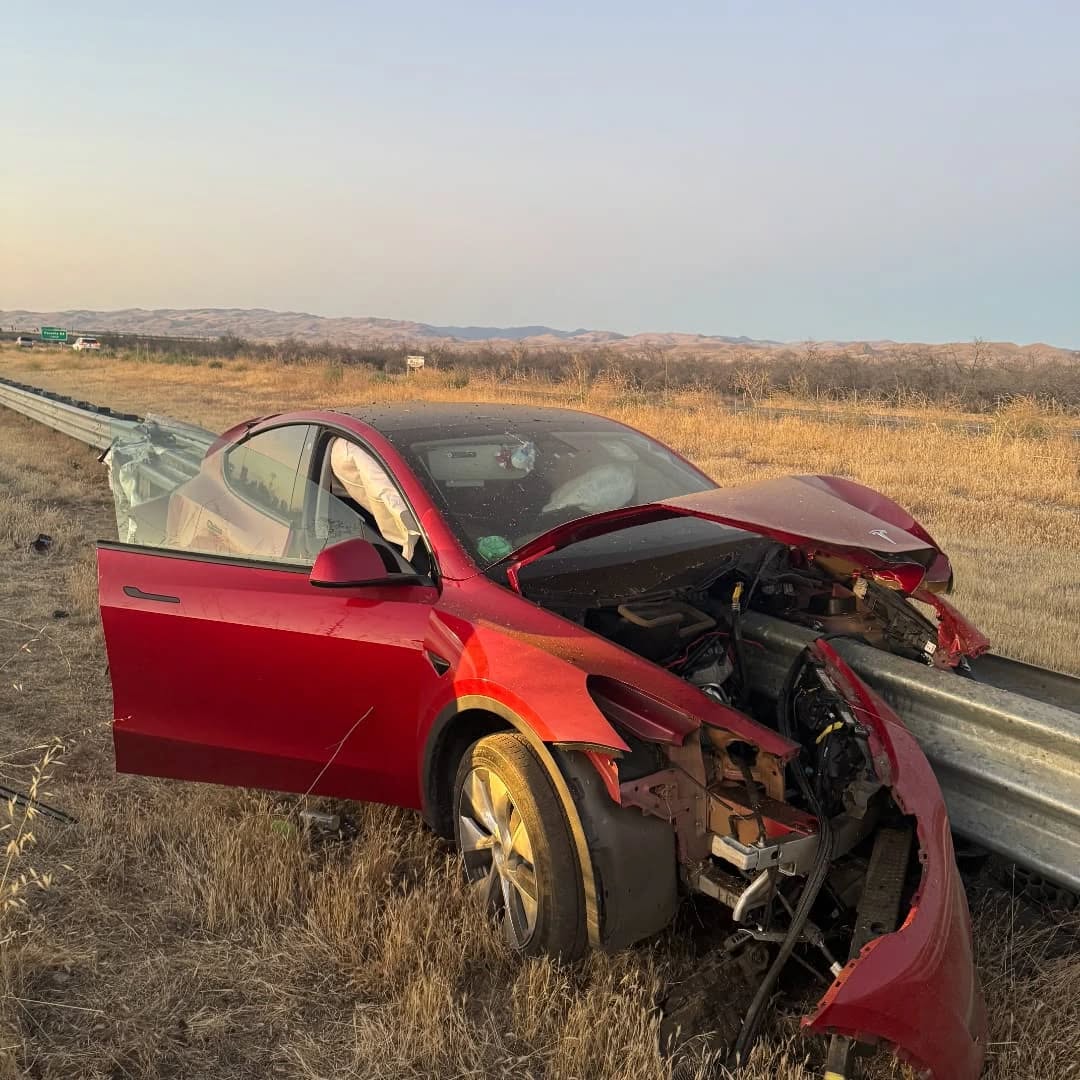
The driver of a Tesla Model Y survived and walked away from a harrowing accident on Monday in California, only sustaining minor injuries despite the vehicle being impaled by a guardrail.
On Monday morning around 4:34 a.m., the Los Banos division of the California Highway Patrol (CHP) responded to the accident on I-5 near Panoche Road, involving a 23-year-old in a Tesla Model Y. According to a post on social media, the driver veered off the road for unknown reasons in the northbound lane, before crashing directly into the guardrail and impaling the vehicle.
You can read the full message and photos from Los Banos CHP below, as were shared in a Facebook post on Monday afternoon.
This morning a Tesla model y was traveling in the #1 northbound lane of I-5 north of Panoche Rd. For unknown reasons driver allowed V-1 to veer off the roadway, travel through a dirt center divide, and crashed into the fixed metal guardrail. Lucky for the driver he only sustained minor injuries and was able to walk away. Driving a vehicle requires 100% attention to the road. Avoid distractions and focus on driving.
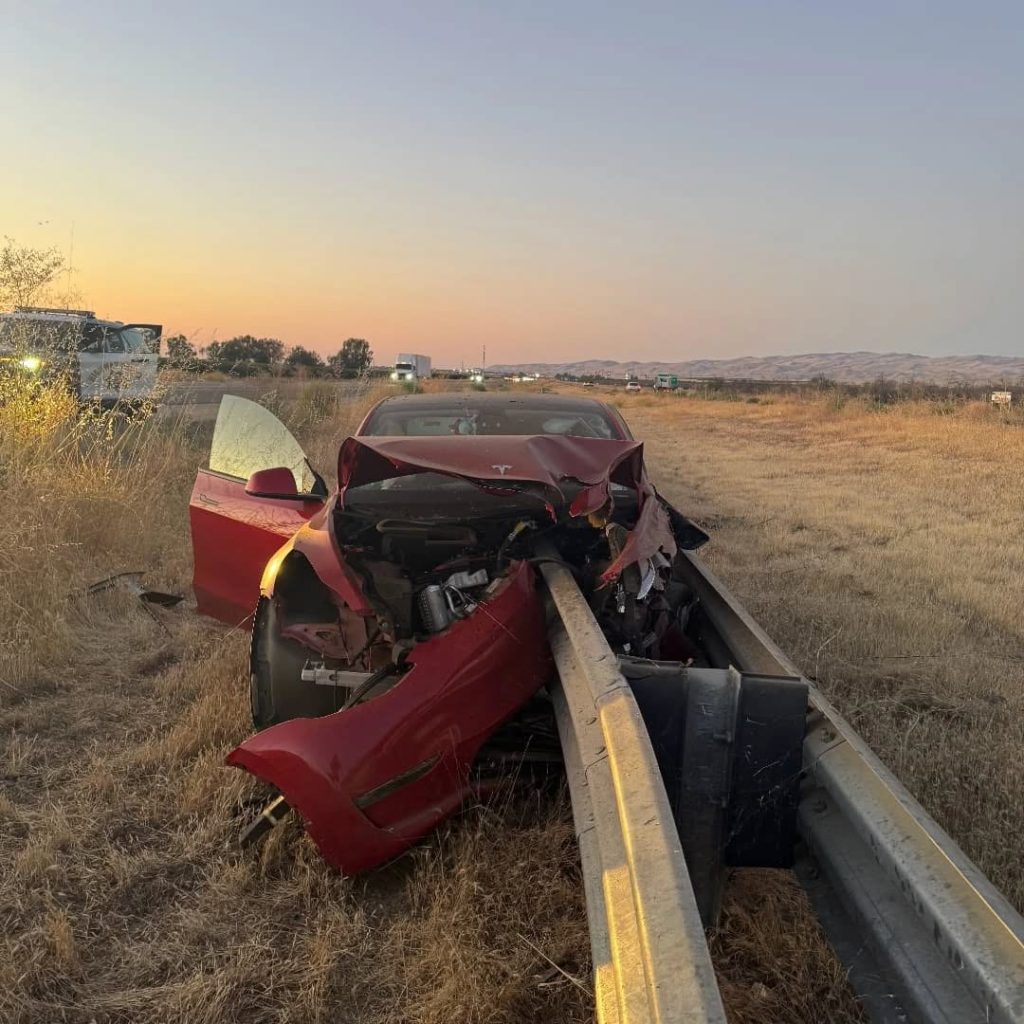
Credit: CHP Los Banos (via Facebook)
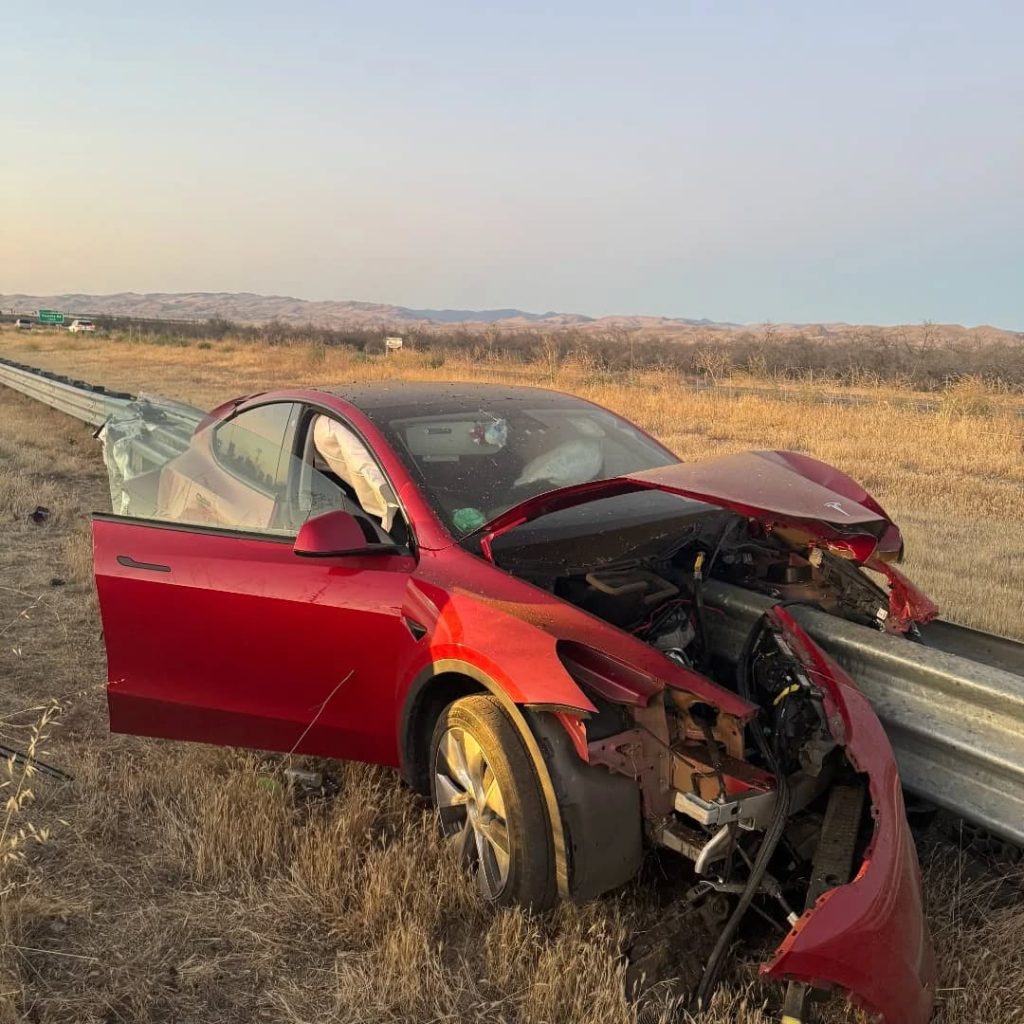
Credit: CHP Los Banos (via Facebook)
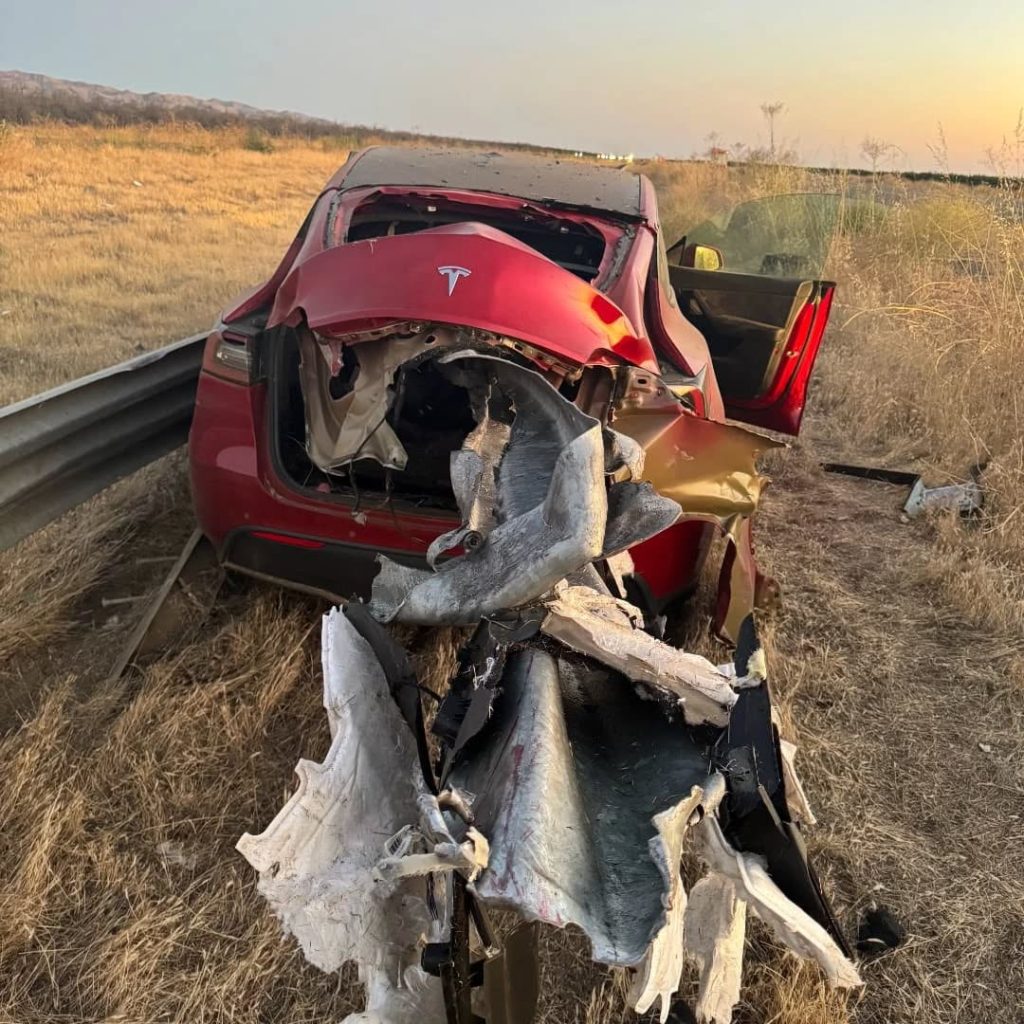
Credit: CHP Los Banos (via Facebook)
In a statement to SFGate, CHP officer Myles Anderson said that the driver only sustained minor injuries, while no arrests are made and drugs and alcohol are not suspected to have been involved. The report also notes that Tesla’s “cruise control and lane assistance features” were activated, according to Anderson. However, it’s not entirely clear if this is referring to Supervised Full Self-Driving (FSD), or to the cruise control and lane assist features baked into Autopilot.
At the time of writing, CHP has not yet responded to Teslarati’s request for clarification and additional details on the matter.
Tesla Crash Safety Ratings across its lineup: pic.twitter.com/ny30R7ceji
— TESLARATI (@Teslarati) July 1, 2025
READ MORE ON TESLA SAFETY: Tesla rolls out crucial new safety feature aimed at saving children
The news comes after Tesla has touted its vehicles as incredibly safe for many years. In December, for example, the company highlighted receiving top safety scores from regulators on four different continents throughout the world, including from the National Highway Traffic Safety Administration (NHTSA) and the Insurance Institute of Highway Safety (IIHS) in the U.S.
Tesla has also listed the goal of making its vehicles the safest on the road throughout the years, both in the overall design of its vehicles and in its Autopilot and Full Self-Driving (FSD) programs.
Tesla Model 3 ranks as the safest new car in Europe for 2025, per Euro NCAP tests
-

 Elon Musk1 week ago
Elon Musk1 week agoTesla investors will be shocked by Jim Cramer’s latest assessment
-

 News2 weeks ago
News2 weeks agoTesla Robotaxi’s biggest challenge seems to be this one thing
-

 News2 weeks ago
News2 weeks agoWatch the first true Tesla Robotaxi intervention by safety monitor
-

 Elon Musk2 weeks ago
Elon Musk2 weeks agoA Tesla just delivered itself to a customer autonomously, Elon Musk confirms
-

 News2 weeks ago
News2 weeks agoTesla Robotaxi rollout proves that Elon Musk still delivers, even if it’s late
-

 Elon Musk2 weeks ago
Elon Musk2 weeks agoxAI welcomes Memphis pollution results, environmental groups push back
-
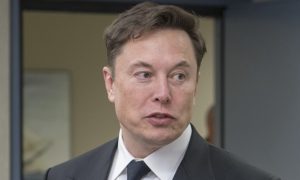
 Elon Musk2 weeks ago
Elon Musk2 weeks agoElon Musk commends Tesla team on successful Robotaxi launch
-

 Elon Musk2 weeks ago
Elon Musk2 weeks agoElon Musk confirms Tesla Optimus V3 already uses Grok voice AI

















